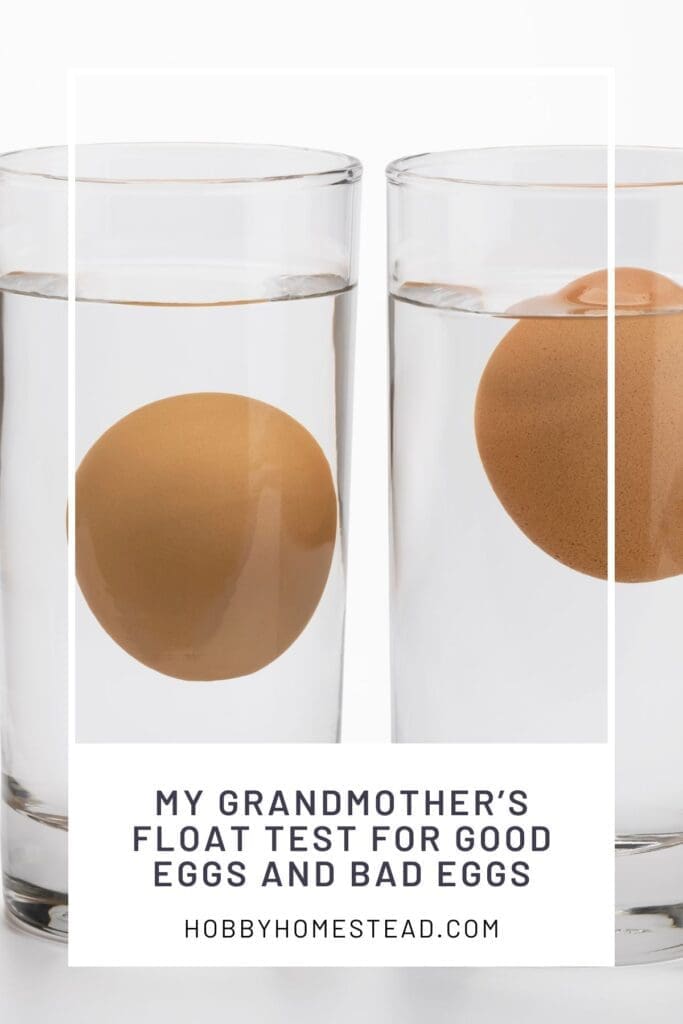While most people plant rhubarb crowns, growing rhubarb from seeds is a good idea if you’re patient and want to explore different varieties. Let me walk you through how to start your own healthy rhubarb plant from seed, step by step.
If you love rhubarb as much as we do, you know there’s nothing quite like stepping outside in early spring and harvesting those tart stalks for a fresh rhubarb pie or rhubarb crumbles.
For us, rhubarb is more than just a perennial vegetable—it’s part of our family tradition. My mother-in-law had a large rhubarb patch that thrived for decades. The stalks were greenish and bitter, a stark contrast to the sweeter red stalks we now pick at my sister-in-law’s. When her patch finally gave out, we knew it was time to start growing our own.
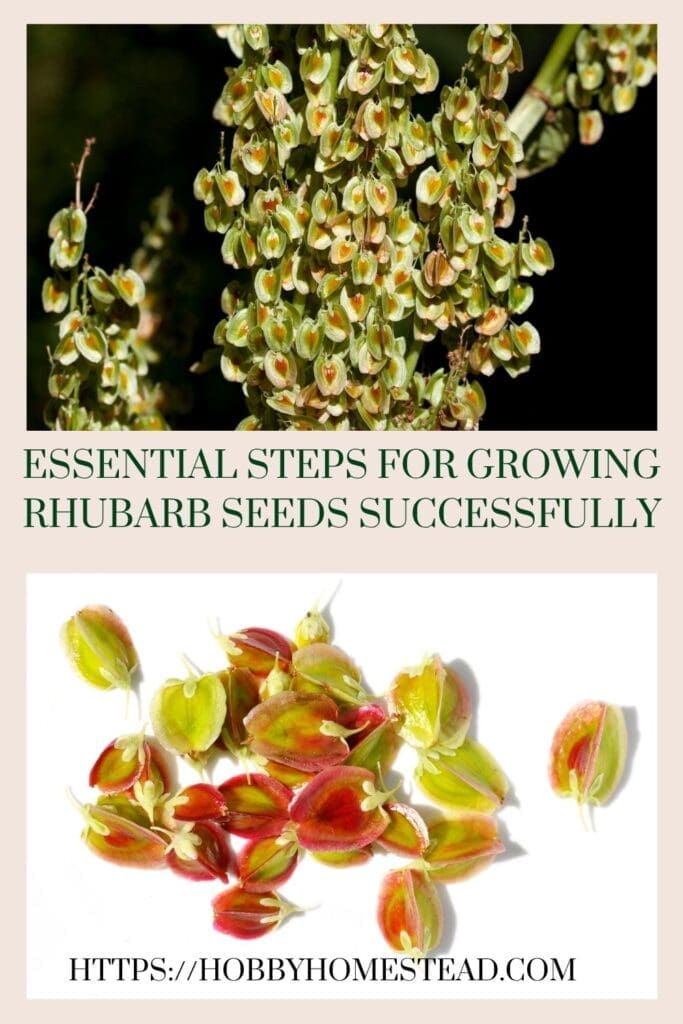
Why Grow Rhubarb from Seed?
Growing rhubarb from seed is the best way to explore unique varieties you won’t always find at a local garden center.
It’s budget-friendly and rewarding, though it does take time. Keep in mind: rhubarb is a perennial plant, so while the first year of growth is mostly about establishing a strong root system, you’ll enjoy harvests for subsequent years to come.
Understanding Rhubarb Crowns vs. Seeds
A rhubarb crown is a chunk of an older plant’s root system with at least one bud. It’s the traditional method used by many home gardeners. Growing from rhubarb seeds, on the other hand, means starting from scratch—but it gives you full control and a wider selection.
Rhubarb Crowns
When you hear someone talk about planting rhubarb crowns, they’re referring to a piece of the plant’s root system that includes at least one growing bud, sometimes called an “eye.”
This chunk of root comes from a mature rhubarb plant and is usually dug up and divided in late fall or early spring. A crown is essentially a living piece of the plant that can be replanted to grow into a whole plant much faster than starting from seed.
You’ll usually find rhubarb crowns sold at garden centers or through mail-order nurseries in early spring. They’re popular because they establish quickly, often allowing for a first harvest as early as the second year.
If you were to dig up a mature rhubarb plant, you’d see a large, woody-looking base where the leaf stalks emerge—this thick, knobby area just above the root system is the crown.
That’s where all the new growth comes from each season. It stores energy over the late fall and winter, then sends up new shoots in early spring.
By contrast, growing rhubarb from rhubarb seeds is a longer process. You’re starting with a tiny seed that must grow roots, leaves, and eventually form a crown of its own.
It takes a year or more just to develop the kind of healthy rhubarb plant you’d get instantly from a crown. However, seeds are more affordable and offer a wider range of varieties, especially if you’re interested in red stalks or heirloom types that aren’t available as crowns.
So to sum it up:
- Rhubarb crowns = a ready-to-grow chunk of root with buds, faster results
- Rhubarb seeds = slower to grow, more variety, lower cost
Both methods will give you a great rhubarb harvest in time—but if you’re starting from scratch, learning about both helps you choose the best way for your garden and USDA zone.
Growing Rhubarb Seeds Successfully
Choosing a Rhubarb Variety
Not all rhubarb stalks are the same. Some varieties like ‘Victoria’ or ‘Glaskins Perpetual’ grow red stalks with a milder, sweeter taste, while others have greenish stalks and a tart flavor.
Tip: Red-stalked rhubarb varieties are often preferred for desserts like pies and jams, while green stalks are more bitter and might need extra sugar.
When to Start Rhubarb Seeds
The best time to start seeds indoors is 8–10 weeks before your area’s last frost date—usually in late winter or early spring, depending on your USDA hardiness zone.
- Soak seeds in warm water overnight to help with germination.
- Start in small pots filled with a light potting mix.
- Keep in a bright indoor spot with a soil temperature of around 65–75°F.
- Water to keep the moist soil damp, but not soggy.
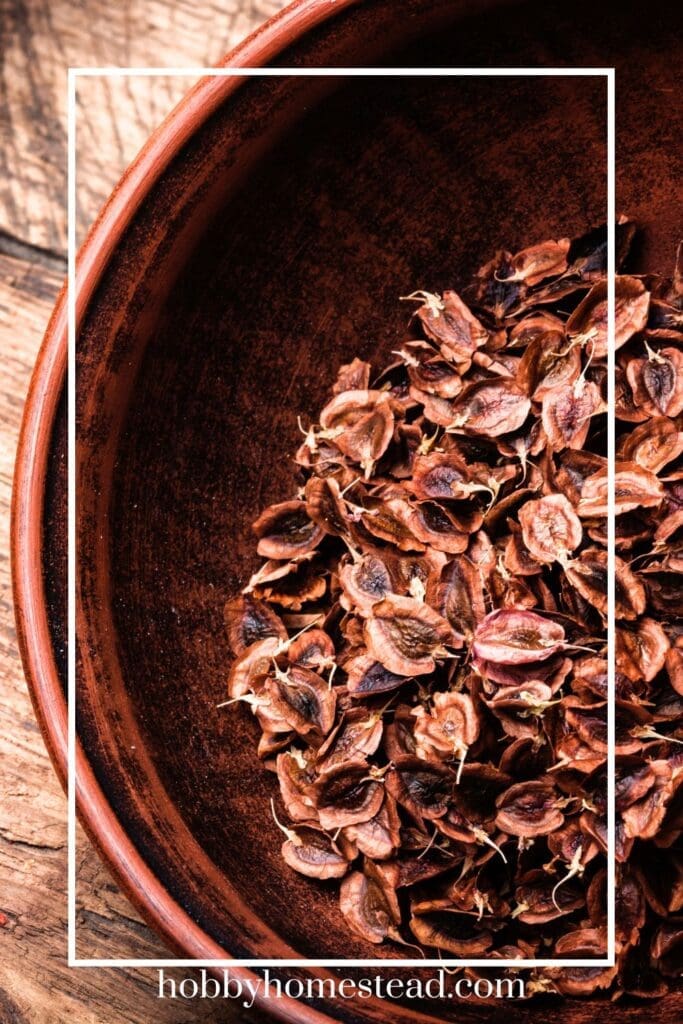
Transplanting Your Seedlings Outdoors
Once all danger of frost has passed (often early May in cool regions), harden off the seedlings gradually and prepare to transplant.
- Choose a site with full sun and loamy soil that drains well.
- Dig a wide hole enriched with compost or plenty of well-rotted manure for essential nutrients.
- Place the seedling so the crown sits at the soil surface, and space each single plant 2–3 square feet apart.
For warmer climates, provide afternoon shade to protect young plants from the summer heat.
Caring for Young Rhubarb Plants
Your goal during the first year of growth is to help your plant build a strong root system.
- Water regularly to maintain moist soil.
- Avoid harvesting during the first season.
- Apply organic matter around the base of the plant to retain moisture and suppress weeds.
- Remove flower stalks or seed stalks as they appear—these drain energy from the roots.
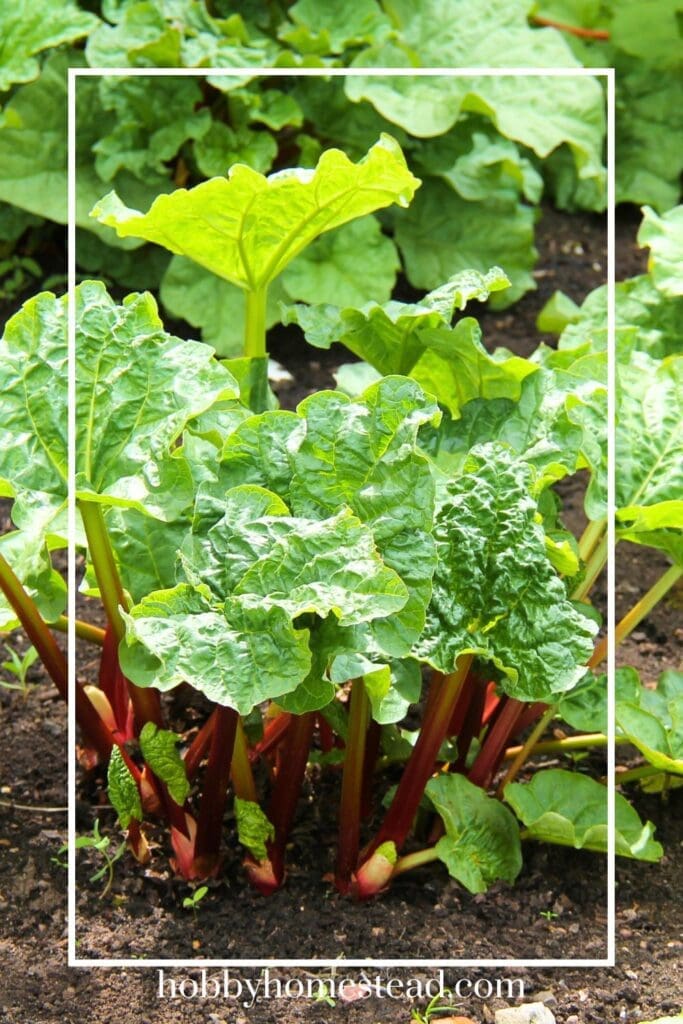
Harvesting Rhubarb (Patience Pays Off!)
Wait until the second year (or even third year for best results) before taking your first harvest. In the second season, you can harvest a few smaller stalks.
- Only take leaf stalks—rhubarb leaves contain oxalic acid and should never be eaten.
- Harvest by pulling and twisting stalks from the ground level, or cut cleanly near the base.
- The growing season typically runs from early April to late August, depending on your zone.
Stop harvesting by early summer to allow the entire plant to recover and store energy.
Common Problems and How to Avoid Them
- Crown rot and root rot can happen in soggy soil—be sure to plant in well-drained soil.
- Cold temperatures won’t hurt established rhubarb—it thrives in cool regions.
- In warmer areas, provide partial shade and monitor for signs of stress.
When Rhubarb Goes Dormant
As fall arrives (late fall to early October), your rhubarb will naturally die back. That’s completely normal. Clean up rhubarb leaves and flower stalks, and mulch the bed to insulate roots through winter. In the following spring, your mature rhubarb plants will return bigger and better.
❌ Can You Grow Rhubarb from a Stalk?
No—you cannot grow rhubarb from just the leaf stalk (the part you eat). Unlike some vegetables like green onions or celery, rhubarb stalks do not contain nodes or buds needed to regenerate the plant. They’re only part of the plant’s growth above ground and don’t have the biological structures to produce roots or shoots.
✅ What You Can Grow Rhubarb From:
- Rhubarb Crowns or Divisions:
This is the fastest way to grow a new plant. A piece of the crown with at least one bud (or “eye”) and a portion of the root system can be replanted. - Rhubarb Seeds:
A slower method, but allows for more variety and is great for gardeners in warmer climates or those wanting to grow from scratch.
⚠️ What Happens If You Plant a Rhubarb Stalk?
If you try to stick a cut stalk (even one with a leaf) into moist soil, it will just wilt and eventually rot. It lacks the essential growing points (like a crown bud or root node) to form a new plant.
🌱 What to Do with Rhubarb Seed Heads
✅ Remove Them Promptly
The best thing to do with rhubarb seed heads is to cut them off at the base as soon as you notice them forming—ideally before they fully bloom. Here’s why:
- Preserve plant energy: Flowering takes energy away from growing thick, juicy leaf stalks.
- Prevent woody or smaller stalks: A rhubarb plant that goes to seed often produces thinner and tougher stalks.
- Extend the harvest: Removing flower stalks helps your plant stay productive through the growing season.
Use clean, sharp garden shears to cut the flower stalk at ground level (near the base of the plant).
🧪 Can You Let Rhubarb Go to Seed?
You can let your rhubarb flower if you’re:
- Saving seeds to grow new plants
- Curious about the plant’s full life cycle
- Or just enjoy the look of the seed head
But only do this on mature rhubarb plants that are several years old and healthy—ideally plants you don’t need to harvest from heavily that year.
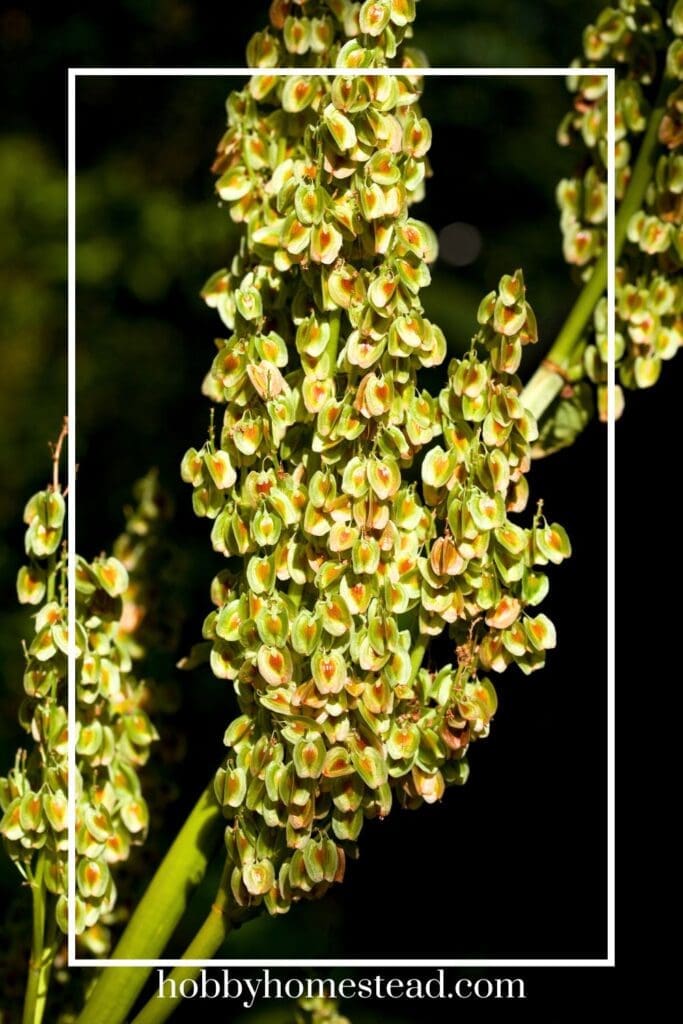
🌼 What Do Rhubarb Seed Heads Look Like?
- They resemble a large, dome-shaped cluster of greenish-white or pinkish flowers.
- The flower stalk grows taller than the edible stalks—sometimes 3–5 feet high.
- Eventually, the flowers turn into seed pods, which can be dried and collected for planting.
🧺 Can You Use the Seed Heads for Anything?
While the seed heads themselves aren’t edible, you can:
- Collect the seeds for growing rhubarb from scratch (just remember, they may not grow true to type).
- Compost them—they break down nicely and return nutrients to your garden.
- Use them as cut flowers for a unique, architectural bouquet (though they don’t last long).
The Best Thing About Growing Rhubarb
Growing rheum rhabarbarum from seed might take time, but it’s one of the most rewarding things you can do in your garden. You’ll have a large plant that comes back year after year, delivering tangy stalks for pies, crisps, jams, and more.
Whether you’re rebuilding a rhubarb patch like we are or simply trying your hand at a new plant, rhubarb is a heavy feeder that thrives with a little patience, fertile soil, and attention to detail.
And honestly? There’s nothing like picking that first crop on a crisp spring morning.


